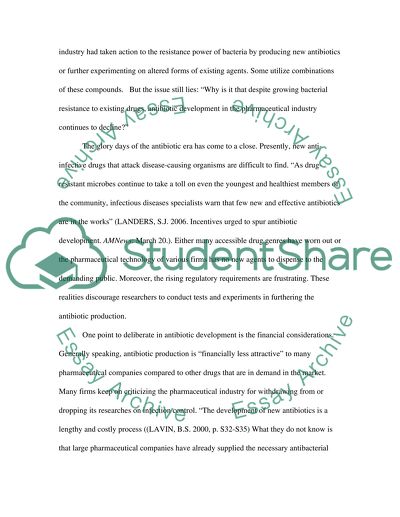Antibiotic development in the pharmaceutical industry Essay. Retrieved from https://studentshare.org/miscellaneous/1507754-antibiotic-development-in-the-pharmaceutical-industry
Antibiotic Development in the Pharmaceutical Industry Essay. https://studentshare.org/miscellaneous/1507754-antibiotic-development-in-the-pharmaceutical-industry.


